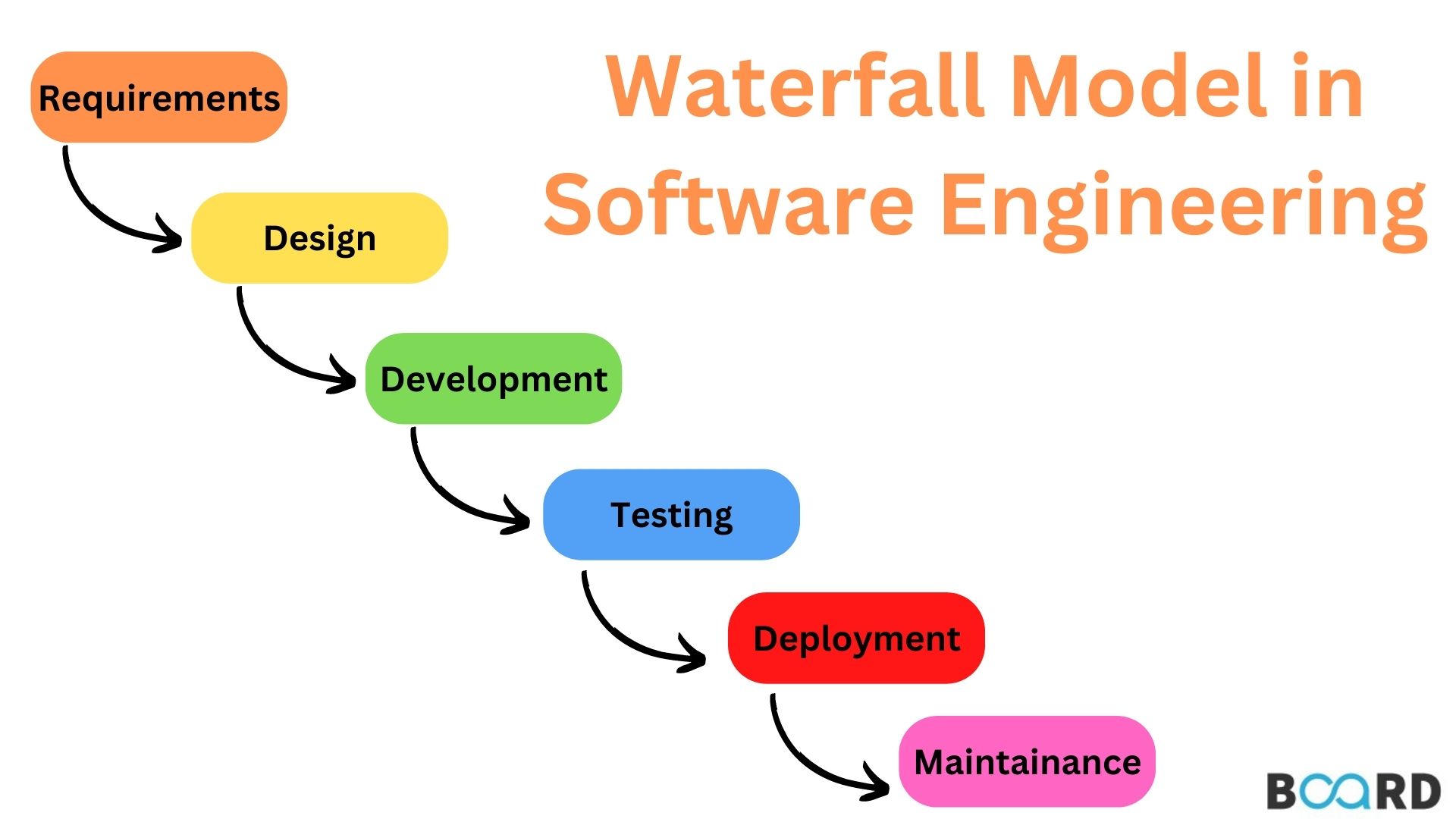Mastering Software Testing: Techniques and Approaches
A Quick Guide to Waterfall Model in Software Engineering

Introduction
An illustration of a sequential model is a waterfall model. According to this approach, the software development process is broken down into many stages, each of which has its own set of activities and goals. The SDLC process' original model is the waterfall model. In actuality, it was the first model that the software industry extensively employed. It is broken down into phases, with each phase's output serving as the following phase's input. A phase must be finished before the commencement of the following phase. In the waterfall model, there isn't any overlap, to put it briefly.
When using the waterfall method, each phase's development begins only after the one before it is finished. This characteristic makes the waterfall model's many phases highly accurate and well-defined. The waterfall model got its name because the phases flow from a high level to a lower level, much like a cascade.
When Is The Waterfall SDLC Model Used?
The SDLC Waterfall model is used when
- The requirements are consistent and rarely altered.
- Small-scale to medium-scale applications.
- No criterion is unclear or difficult to understand.
- The development environment is secure.
- The employed methods and tools are static and non-dynamic.
- Resources are readily accessible and well-trained.
Phases of the waterfall model
The waterfall technique consists of seven steps when applied to a software development process:
- Requirements. A technical requirements document, also known as a functional specification, is created by analyzing potential needs, timeframes, and project parameters. The project is defined and planned at this stage of development, but no specific processes are mentioned.
- Analysis. To create product models and business logic to direct manufacturing, the system specifications are examined. At this point, the viability of the available financial and technological resources is also examined.
- Design. To describe the technical requirements for the design, such as the programming language, hardware, data sources, architecture, and services, a design specification document is made.
- Coding and implementation. The models, logic, and requirement specifications specified in the earlier phases are used to develop the source code. The system is typically coded in smaller pieces or units before being assembled.
- Testing. At this point, problems that need to be fixed are found through quality assurance, unit, system, and beta testing. This may need repeating the debugging phase of the development process. If the system succeeds in development and testing, the waterfall process continues.
- Operation and deployment. The product or application is released into a live environment after being determined to be fully functional.
- Maintenance. To continuously improve, update, and improve the product and its functioning, corrective, adaptive, and corrective maintenance is carried out. Release of patch updates and fresh versions may fall under this category.
Pros and Cons of the Waterfall Model
- The following are some benefits of employing the waterfall model:
- Simple, clear, and convenient to use.
- The waterfall paradigm functions effectively and produces the desired outcomes for smaller projects.
- It is simple to maintain since the stages are strict and exact, and each step is completed one at a time. It is simple and methodical to go forward with quality because the admission and exit criteria are clearly established.
- The outcomes are well-documented.
Disadvantages of using the waterfall model:
- Unable to embrace the necessary adjustments.
- It becomes quite difficult to return to the phase.
- It becomes challenging to make changes once the program has advanced to the testing stage, for instance, if the requirements change.
- Due to the lack of a quick prototype, the delivery of the finished product is delayed.
- This methodology is not suitable for larger and more complicated projects since the risk is greater.
- Unsuitable for projects with often changing requirements. does not apply to current, prolonged projects.
- Since testing is performed at a later stage, it is difficult to design a risk mitigation strategy since it is not possible to recognize the difficulties and dangers at an earlier stage.
Conclusion
The importance of approving the deliverables from each step is emphasized by the waterfall methodology. The Waterfall technique is still useful for smaller projects, but Agile and prototype methodologies presently rule the roost. The best results from the Waterfall methodology come from requirements that are straightforward and testable.
